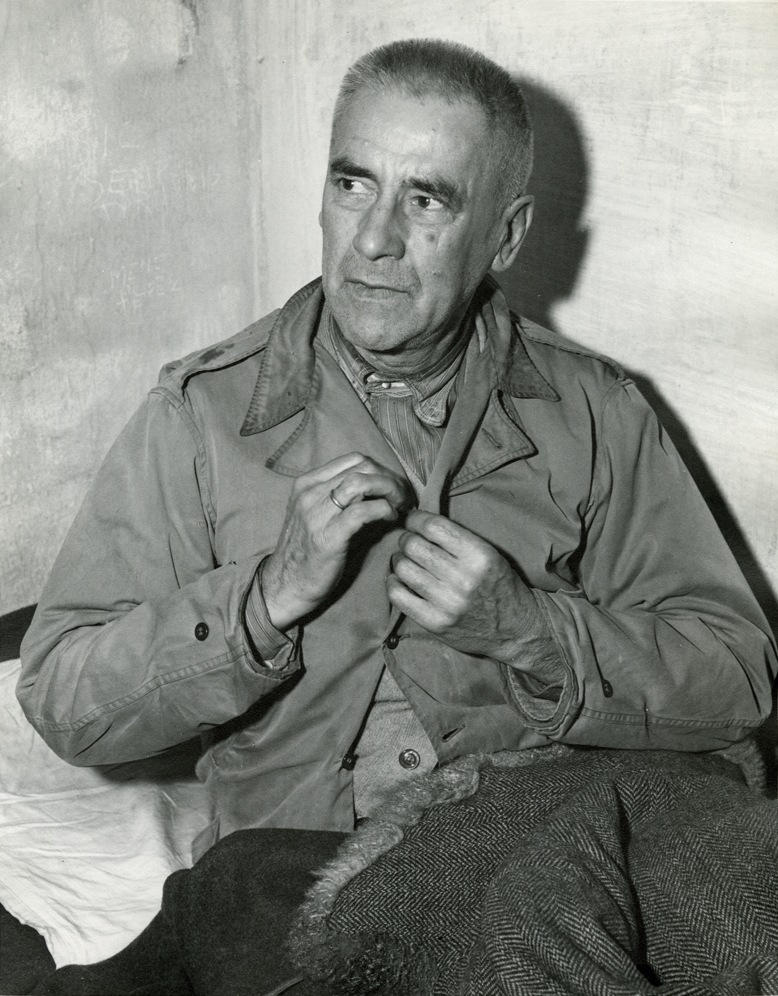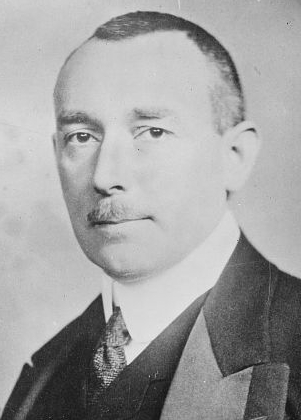|
Reichstag Fire Decree
The Reichstag Fire Decree () is the common name of the Decree of the Reich President for the Protection of People and State () issued by German President Paul von Hindenburg on the advice of Chancellor Adolf Hitler on 28 February 1933 in immediate response to the Reichstag fire. The decree nullified many of the key civil liberties of German citizens. With the Nazis in powerful positions in the German government, the decree was used as the legal basis for the imprisonment of anyone considered to be opponents of the Nazis, and to suppress publications not considered "friendly" to the Nazi cause. The decree is considered by historians as one of the key steps in the establishment of a one-party Nazi state in Germany. Background Hitler had been appointed Chancellor of Germany only four weeks previously, on 30 January 1933, when he was invited by President von Hindenburg to lead a coalition government. Hitler's government had urged von Hindenburg to dissolve the Reichstag and ... [...More Info...] [...Related Items...] OR: [Wikipedia] [Google] [Baidu] [Amazon] |
Reichstag (building)
The Reichstag (; ) is a historic legislative government building on Platz der Republik (Berlin), Platz der Republik in Berlin that is the seat of the Bundestag, German Bundestag. It is also the meeting place of the Federal Convention (Germany), Federal Convention, which elects the President of Germany. The Neo-Renaissance building was constructed between 1884 and '94 in the Tiergarten (Berlin), Tiergarten district on the left bank of the River Spree (river), Spree to plans by the architect Paul Wallot. It housed the Reichstag (legislature) of the German Empire and subsequent Weimar Republic. German Reich, The Reich's Federal Council also originally met there. The building was initially used by the Reichstag for Nazi Germany, but severe damage in the Reichstag fire of 1933 prevented further use and the Reichstag moved to the nearby Kroll Opera House. The 1933 fire became a pivotal event in the entrenchment of the Nazi regime. The building took further damage during World War II, ... [...More Info...] [...Related Items...] OR: [Wikipedia] [Google] [Baidu] [Amazon] |
Gleichschaltung
The Nazi term (), meaning "synchronization" or "coordination", was the process of Nazification by which Adolf Hitler—leader of the Nazi Party in Nazi Germany, Germany—established a system of totalitarian control and coordination over all aspects of German society "from the Economy of Nazi Germany, economy and German Labour Front, trade associations to the Reich Ministry of Public Enlightenment and Propaganda, media, Reich Chamber of Culture, culture and Reich Ministry of Science, Education and Culture, education". Although the Weimar Constitution remained nominally in effect throughout Government of Nazi Germany, Hitler's dictatorship, near total Nazification was achieved by 1935 with the resolutions approved during that year's Nuremberg Rally, fusing the symbols of the party and the state (see Flag of Nazi Germany) and depriving German Jews of their citizenship (see Nuremberg Laws). The tenets of ''Gleichschaltung'', including the Nuremberg Laws, also applied to German-o ... [...More Info...] [...Related Items...] OR: [Wikipedia] [Google] [Baidu] [Amazon] |
Wilhelm Frick
Wilhelm Frick (12 March 1877 – 16 October 1946) was a German prominent politician of the Nazi Party (NSDAP) and convicted war criminal who served as Minister of the Interior in Adolf Hitler's cabinet from 1933 to 1943 and as the last governor of the Protectorate of Bohemia and Moravia. As the head of the ''Kriminalpolizei'' (criminal police) in Munich, Frick took part in Hitler's failed Beer Hall Putsch of 1923, for which he was convicted of high treason. He managed to avoid imprisonment and soon afterwards became a leading figure of the Nazi Party (NSDAP) in the Reichstag. In 1930, Frick became the first Nazi to hold a ministerial-level post at any level in Germany in Thuringia as state Minister of the Interior. After Hitler became Chancellor of Germany in 1933, Frick joined the new government and was named Minister of the Interior. Additionally, on 21 May 1935, Frick was named ''Generalbevollmächtigter für die Reichsverwaltung'' (General Plenipotentiary for the Administr ... [...More Info...] [...Related Items...] OR: [Wikipedia] [Google] [Baidu] [Amazon] |
German National People's Party
The German National People's Party (, DNVP) was a national-conservative and German monarchy, monarchist political party in Germany during the Weimar Republic. Before the rise of the Nazi Party, it was the major nationalist party in Weimar Germany. It was an alliance of Conservatism in Germany, conservative, German nationalism, nationalist, monarchist, , and antisemitic elements supported by the Pan-German League. Ideologically, the party was described as subscribing to authoritarian conservatism, German nationalism, and monarchism. Until 1931, the party also advocated for National liberalism, national liberal and Protectionism, protectionist economic policies, embracing corporatism, corporatist economic policies from 1931 onwards. Some members like the populist media mogul Alfred Hugenberg embraced Economic nationalism, economic nationalism and Statism, statism. Under Hugenberg the party is seen by some as a ''German Tory conservatism, Tory conservative'' party. It held anti-commu ... [...More Info...] [...Related Items...] OR: [Wikipedia] [Google] [Baidu] [Amazon] |
Franz Gürtner
Franz Gürtner (26 August 1881 – 29 January 1941) was a German Minister of Justice in the governments of Franz von Papen, Kurt von Schleicher and Adolf Hitler. Gürtner was responsible for coordinating jurisprudence in Nazi Germany and provided official sanction and legal grounds for a series of repressive actions under the Nazi regime from 1933 until his death in 1941. Biography Early life and career Gürtner was the son of Franz Gürtner (locomotive engineer) and Marie Gürtner, née Weinzierl. After the graduating from the gymnasium in 1900 in Regensburg, he studied law at the Ludwig Maximilian University of Munich. After eight semesters he passed in 1904 his university examination. His preparation for Bavarian civil service was interrupted for the military service in the ''Königlich Bayerisches 11. Infanterie-Regiment "von der Tann"''. After passing his second '' Staatsexamen'' in 1908 he worked as syndic for a Munich brewery association. On 1 October 1909, he entered ... [...More Info...] [...Related Items...] OR: [Wikipedia] [Google] [Baidu] [Amazon] |
Public Safety
Public security or public safety is the prevention of and protection from events that could endanger the safety and security of the public from significant danger, injury, or property damage. It is often conducted by a state government to ensure the protection of citizens, persons in their territory, organizations, and institutions against threats to their well-being, survival, and prosperity. The public safety issues that a municipality, county, regional, or federal jurisdiction may handle include crimes (ranging from misdemeanors to felonies), structure fires, conflagrations, medical emergencies, mass-casualty incidents, disasters, terrorism, and other concerns. Public safety organizations are organizations that conduct public safety. They generally consist of emergency services and first responders such as law enforcement, fire services, emergency medical services, security forces, and military forces. They are often operated by a government, though some private p ... [...More Info...] [...Related Items...] OR: [Wikipedia] [Google] [Baidu] [Amazon] |
Weimar Constitution
The Constitution of the German Reich (), usually known as the Weimar Constitution (), was the constitution that governed Germany during the Weimar Republic era. The constitution created a federal semi-presidential republic with a parliament whose lower house, the Reichstag (Weimar Republic), Reichstag, was elected by universal suffrage using proportional representation. The appointed upper house, the Reichsrat (Germany), Reichsrat, represented the interests of the federal states. The President of Germany (1919–1945), president of Germany had supreme command over the military, extensive emergency powers, and appointed and removed the chancellor, who was responsible to the Reichstag. The constitution included a significant number of civic rights such as freedom of speech and ''habeas corpus''. It guaranteed freedom of religion and did not permit the establishment of a state church. The constitution contained a number of weaknesses which, under the difficult conditions of the inter ... [...More Info...] [...Related Items...] OR: [Wikipedia] [Google] [Baidu] [Amazon] |
Article 48
Article 48 of the Weimar constitution, constitution of the Weimar Republic of Germany (1919–1933) allowed the President of Germany (1919–1945), Reich president, under certain circumstances, to take emergency measures without the prior consent of the Reichstag (Weimar Republic), Reichstag. This power came to be understood to include the promulgation of emergency decrees. It was used frequently by Reich President Friedrich Ebert of the Social Democratic Party of Germany, Social Democratic Party to deal with both political unrest and economic emergencies. Later, under President Paul von Hindenburg and the Presidential cabinets of the Weimar Republic, presidential cabinets, Article 48 was called on more and more often to bypass a politically fractured parliament and to rule without its consent. After the Nazi Party's Adolf Hitler's rise to power, rise to power in the early 1930s, the law allowed Chancellor Adolf Hitler, with decrees issued by Hindenburg, to create a Dictatorship, ... [...More Info...] [...Related Items...] OR: [Wikipedia] [Google] [Baidu] [Amazon] |
Ludwig Grauert
Ludwig Clemens August Grauert (9 January 1891 – 4 June 1964) was a German lawyer who served as the State Secretary in the Prussian and Reich Ministry of the Interior in Nazi Germany and played a role in drafting the Reichstag Fire Decree. He also was an SS-''Brigadeführer''. Early life Grauert was born in Münster, attended ''Volksschule'' and the '' Realgymnasium'' there and attained his ''Abitur''. He next studied law at the University of Münster and the Ludwig Maximilian University of Munich. He passed his '' Referendar'' examination in October 1913 and began employment as a law clerk at the Hamm Higher Regional Court. On the outbreak of the First World War, he entered the Imperial German Army in August 1914 and served on the front lines until March 1918, first with the 4th (Westphalian) Cuirassiers "von Driesen" and then, from August 1916, as a ''Leutnant'' with a machine gun company in the 15th Reserve Infantry Regiment. From March 1918 until the end of the war in ... [...More Info...] [...Related Items...] OR: [Wikipedia] [Google] [Baidu] [Amazon] |
Hermann Göring
Hermann Wilhelm Göring (or Goering; ; 12 January 1893 – 15 October 1946) was a German Nazism, Nazi politician, aviator, military leader, and convicted war criminal. He was one of the most powerful figures in the Nazi Party, which governed Germany from 1933 to 1945. He also served as ''Oberkommando der Luftwaffe, Oberbefehlshaber der Luftwaffe'' (Supreme Commander of the Air Force), a position he held until the final days of the regime. He was born in Rosenheim, Kingdom of Bavaria, Bavaria. A veteran World War I fighter pilot Flying aces, ace, Göring was a recipient of the . He served as the last commander of Jagdgeschwader 1 (World War I), ''Jagdgeschwader'' 1 (JG I), the fighter wing once led by Manfred von Richthofen. An early member of the Nazi Party, Göring was among those wounded in Adolf Hitler's failed Beer Hall Putsch in 1923. While receiving treatment for his injuries, he developed an addiction to morphine that persisted until the last year of his life. Aft ... [...More Info...] [...Related Items...] OR: [Wikipedia] [Google] [Baidu] [Amazon] |
Prussian Ministry Of The Interior
This page lists Prussian Ministers of the Interior. History Upon the founding of the Prussian Interior Ministry in 1808 until the dissolution of the State of Prussia in 1945. The Prussian Interior Ministers were members of the Prussian State Ministry. Interior ministers (1808–1934) See also * Interior Ministers of Germany References {{Interior Ministers of Prussia Prussia Prussia (; ; Old Prussian: ''Prūsija'') was a Germans, German state centred on the North European Plain that originated from the 1525 secularization of the Prussia (region), Prussian part of the State of the Teutonic Order. For centuries, ... Interior ... [...More Info...] [...Related Items...] OR: [Wikipedia] [Google] [Baidu] [Amazon] |






